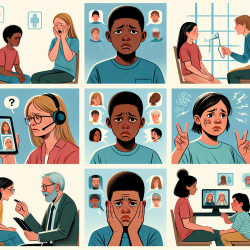As a practitioner in the field of special education, you're always looking for ways to improve your skills and provide the best possible support to your students. A recent study published in the Journal of Applied Research in Intellectual Disabilities sheds light on an often-overlooked aspect of sensory processing: odour detection in children and young people with profound intellectual and multiple disabilities (PIMD).
The study, conducted by Petitpierre et al. (2022), explored the olfactory detection abilities of 22 children and young people with PIMD, aged 7 to 18 years. The participants were presented with 18 medium-intensity odours and an odourless control stimulus, with their responses measured using 21 behavioural indicators. The results were fascinating and could have significant implications for your practice.
Key Findings
The study revealed several key findings that can help you better understand and support children with PIMD:
- Participants were able to distinguish between odorous and neutral conditions.
- They could differentiate between food and non-food odours.
- They showed distinct reactions to pleasant and unpleasant odours.
- The duration of head alignment on the odorant was a significant behavioural indicator of detection abilities.
Implementing the Findings in Your Practice
Here are some practical ways to incorporate these findings into your daily work:
- Enhance Sensory Environments: Create sensory-rich environments that include a variety of odours. Use pleasant and familiar scents to help students feel more comfortable and engaged.
- Monitor Behavioural Indicators: Pay close attention to behavioural indicators such as head alignment and other subtle cues that may indicate olfactory detection. This can help you better understand each student's sensory preferences and needs.
- Personalize Learning Experiences: Use the information gathered from olfactory responses to tailor educational and therapeutic activities. For example, incorporating preferred scents into learning materials or therapy sessions can enhance engagement and effectiveness.
- Collaborate with Families: Share your observations with families and caregivers. Understanding a child's olfactory preferences can help create more supportive home environments and improve overall quality of life.
Encouraging Further Research
While this study provides valuable insights, there is still much to learn about olfactory detection in children with PIMD. As a practitioner, you can contribute to this growing body of knowledge by:
- Conducting Your Own Observations: Document and share your findings with colleagues and researchers. Every bit of data helps build a clearer picture of sensory processing in children with PIMD.
- Participating in Research Studies: Encourage your school or organization to participate in research studies. Collaboration with universities and research institutions can lead to new discoveries and improved practices.
- Staying Informed: Keep up-to-date with the latest research by attending conferences, reading publications, and participating in webinars. Networking with other professionals can also provide new insights and ideas.
To read the original research paper, please follow this link: Odour detection in children and young people with profound intellectual and multiple disabilities.










